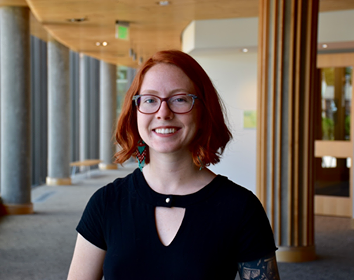
Dispatch from #ForumCon19
This post by Kelly Connor, Program & Communications Manager of Gateway Center for Giving, originally appeared on the United Philanthropy Forum's blog.
As the newest staff member at a 3-person regional philanthropy-serving organization in the Midwest, I’ve been playing a little game of catch up since starting my job in April 2019. Despite having graduated from one of the best social work schools in the nation, the Brown School at Washington University in St. Louis, my knowledge and exposure to “philanthropy” and the world of “philanthropy-serving organizations” (PSOs) was somewhat limited. Sure, there were grant writing classes and conversations about the flow of money, but not as much on philanthropic trends, ethics, and best practices.
This is where my experience at the United Philanthropy Forum’s Annual Conference became invaluable. Through four solid days of connecting with peers, attending countless breakout sessions, and hearing from some of philanthropy’s most notable thought-leaders, I became absorbed into the world of philanthropy in a way I couldn’t have predicted.
Isaac Newton is frequently cited as having said, "If I have seen further it is by standing on the shoulders of Giants."
That is what the Forum’s annual gathering enabled me to do. It allowed me to learn about previous discoveries in the field and see out into the future of philanthropy. It gave me ideas, inspiration, and practical advice.
In the spirit of standing on the shoulders of Giants, I would like to share about two sessions during the conference that really opened my eyes to what philanthropy-serving organizations (PSOs) can accomplish and are capable of.
1. Anchor Institutions, Community Revitalization, and the Role of Philanthropic Leadership
This conference session highlighted the Baltimore Integration Partnership, a collaborative partnership of anchor institutions, funders, nonprofits, and public organizations focused on establishing economic inclusion as a business culture norm in the Baltimore region. Economic inclusion practices include connecting local, small, and minority-owned businesses to anchor procurement and purchasing opportunities, increasing hiring of local and minority residents by anchors, and leveraging anchor real estate investments to intentionally maximize benefit for surrounding communities.
In their capacity as the backbone organization, Maryland Philanthropy Network staffed, coordinated, and sustained the partnership that made this all possible. While President Celeste Amato expressed this undertaking was not without challenges, their PSO is now seen as a neutral convener capable of navigating complex and layered issues in the region.
Learning about this powerful partnership and Maryland Philanthropy Network’s bold decision to step into this role inspired me. They could have backed away and labeled the initiative as too ambitious, but they didn’t. They saw the power in partnership. They viewed themselves as an anchor institution and embraced large-scale cross-sector collaboration.
2. The PSO Field Guide to Partnership and Collaboration
During this year’s conference, a draft of the long-awaited Navigating the PSO Partnership Trail: Field Guide for Philanthropy-Serving Organizations was released. At a conference session introducing the guide, Dave Sheldon shared how his PSO, Southern California Grantmakers, partnered with California’s other two regional philanthropy-serving organizations to form the Philanthropy California alliance. Together they represent a strong statewide voice. Rather than see each other as competition, they recognized their power to partner, grow the philanthropic sector, and drive relevance to their combined membership of more than 600 organizations.
An extraordinary lift that required much coordination and funding, the alliance is an interesting example of what structural alliance and strategic partnership can look like in the philanthropic ecosystem. What I appreciated the most about this session was that it didn’t put Philanthropy California’s partnership on a pedestal. Rather their story allowed attendees to see further, imagine more, and learn from their discoveries.
Looking ahead into Gateway Center for Giving’s future, I am hopeful. We have access to some of the brightest minds, daring colleagues, and “giants” in our network. The United Philanthropy Forum’s conference was an immersion into this work that inspired me and expanded my vision for GCG farther than I could have imagined, before our trip to Cleveland.
External link
